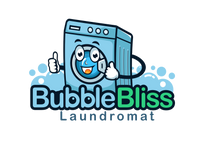Laundry tags were never designed with detailed instructions, so the dryer settings and laundry symbols feel like a puzzle that nobody wants to solve. An instant drying guide already helps, yet people still freeze the moment they see something like what is tumble dry printed on a tag.
Getting the basics right changes the whole flow of laundry day. Smart habits create less hassle, fewer mistakes, and pieces that stay crisp for a longer stretch.
What Does “Tumble Dry” Mean?
The phrase looks technical, although the idea behind it is very simple. Clothes just move around in a warm, rotating drum so air can reach every part of the fabric. It’s classic tumble drying, a simple piece of laundry terminology supported by fabric care basics built into modern machines.
Many still pause at the label thinking about what is tumble dry, even though the process stays easy. The gentle motion spreads heat evenly, helping regular outfits dry smoothly without much thought.
How Tumble Dryers Work
A standard dryer runs through a drying cycle that mixes motion with heat. Machines push warm air into the drum while built-in heat settings control how intense that warmth feels. The steady drum rotation prevents clothes from sitting still, allowing air to hit different angles.
Good airflow pulls moisture out of the fabric, while moisture sensors adjust heat automatically. The sensors stop the cycle once the load reaches the right dryness level, keeping clothes from overcooking. This setup delivers consistent results with less guesswork.
Tumble Dry Symbols You Should Know
Care tags feature laundry symbols that show how fabric should be dried. These icons often include dryer icon meanings people overlook, leading to accidental shrinking or fading.
A quick breakdown helps:
- A square with a circle inside represents standard tumble dry
- A dot inside the symbol means low heat
- Two dots signal medium heat
- Three dots stand for high heat
- The same symbol with an X across it means do not tumble dry
These icons guide users toward the correct setting every time.
Tumble Dry Settings Explained
Different clothes need different levels of care. Labels often mention tumble dry low, tumble dry high, or a delicate cycle, each one serving a specific purpose.
Here’s a simple breakdown:
- Low heat works well for synthetics, activewear, and lightweight materials
- Medium heat supports everyday cotton and standard blends
- High heat handles tougher pieces like denim or thicker cotton
- Delicate mode stays gentle for fabrics that require softer handling
Matching the right setting protects shape, texture, and color.
Benefits of Tumble Drying
People choose tumble drying for speed and consistency. It delivers fast drying results without much waiting time, which helps with busy daily routines. The tumbling action also supports wrinkle reduction by keeping clothes in motion until the cycle ends.
Freshness improves further when towels fluff up inside the dryer, creating a softer feel. This form of convenient laundry keeps fabrics comfortable for regular use while reducing the time spent on hang-drying.
When You Should Avoid Tumble Drying
Not all fabrics enjoy heat. Anything prone to shrinkage risk needs special treatment. Items made from delicate fabrics such as silk, wool, or lace often lose shape when exposed to higher temperatures, and long exposure increases heat damage.
This section also includes linen, decorated tops, sequins, beading, or delicate synthetics. These materials stay safer through air drying or low-impact methods that protect their structure.
Tumble Dry vs. Air Dry: Which Is Better?
Some clothes respond better to natural drying. An air dry vs tumble dry comparison shows clear differences based on fabric needs. The drying comparison usually comes down to speed, texture, and long-term durability.
Tumble drying keeps things fast and fluffy, while air drying supports long-lasting fibers with lower wear. Each method helps in different scenarios, so having both options offers more control.
How to Tumble Dry Clothes Safely
The safest routine follows basic dryer safety steps. Always read labels first to understand the right approach. Proper fabric care tips cover using correct heat levels and loading the drum with room for movement. This reduces mistakes and helps clothes breathe.
Avoid keeping the cycle running longer than needed since over-drying increases wear. A clean lint trap improves airflow and helps avoid shrinkage, forming a solid habit that supports better care.
Eco-Friendly Tumble Drying Tips
Energy use matters during laundry. Simple energy-saving drying tricks help reduce consumption without losing performance. Dryer balls shorten run time by improving airflow, and low heat options protect fibers while saving power.
Shorter cycles and half loads contribute to sustainable laundry. Small adjustments like these reduce environmental impact and lower utility costs.
End Note
Understanding the basics of tumble drying brings confidence to everyday laundry. Practical routines make fabric last longer and fit effortlessly into everyday laundry tips that highlight simple fabric care. Some loads still need extra help, especially for delicate or busy weeks.
A professional NYC laundry service like Bubble Bliss keeps things consistent when time gets tight. Clothing stays fresh, folded, and ready without the stress. Booking a Wash & Fold pickup creates a smoother laundry flow whenever needed.


